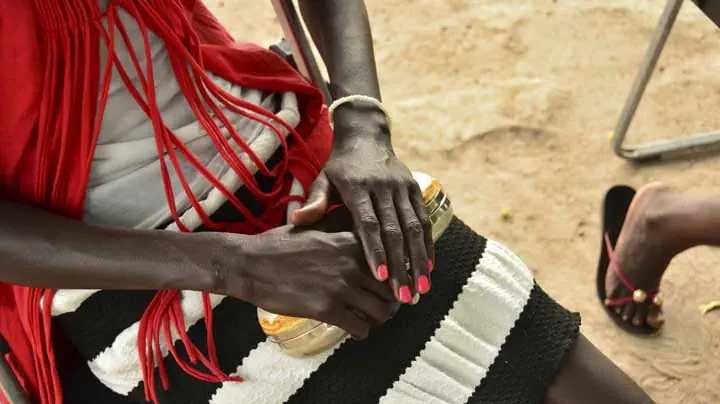
By Sam Mednick, Associated Press
RUMBEK, South Sudan (AP) — “If I’d have refused, my father and brothers would have killed me,” Eliza says. Shifting uncomfortably in her plastic chair, the 17-year-old recoils when remembering her wedding day.
In 2012, at the age of 13, Eliza was forced by her father to marry a 35-year-old man from their village in the South Sudan town of Rumbek. She was traded for 50 cattle.
As her family slaughtered a cow in celebration and sent her away, the girl was unhappy. “I just cried,” Eliza said. The Associated Press is using only her first name to protect her identity.
Fifty-two percent of girls in South Sudan are married before age 18, according to the United Nations. Seventeen percent marry before they turn 15.
The world’s youngest nation is well into its fourth year of civil war, with mass displacement, alleged war crimes and starvation driving millions of people deeper into despair. Although child marriage is a long-standing practice, South Sudan’s government and aid agencies say conflict-driven poverty and severe food insecurity are increasing its prevalence.
“People are dying from hunger,” said Isaac Karkon, head of the government’s humanitarian arm in Rumbek. “So if you have a mature daughter you give her up to let the rest survive.”
In the past year, Karkon said, the rate of child marriage has gone above the typical 60 percent mark in the “destitute” state of Rumbek and surrounding. While walking through the market at the end of July, Karkon saw at least three child marriages being performed in one afternoon. He said it is “alarming.”
While child marriage is widely practiced, it’s particularly prevalent in the Lakes State and Bahr el Ghazal regions, predominantly ethnic Dinka pastoralist areas where cattle carry economic and cultural importance. Cows are used for payments and dowries, which Human Rights Watch call a “key driver of child marriage” as families see daughters as a source of wealth.
“South Sudan’s conflict, which has been characterized by rampant sexual violence against women and girls, continues to normalize violence against women and girls, including child marriage,” said Agnus Odhiambo, a senior researcher with the rights group.
Eliza said she had no idea what marriage was. She only knew she was miserable and terrified.
“The worst part was having sex,” she said, looking at the floor. “I didn’t know what he wanted from me and it was so painful.”
Two years into her marriage, at age 15, Eliza gave birth to a daughter. As the youngest of her husband’s five wives, she said he neglected her and the baby, never providing medicine. After a few years of marriage, Eliza’s father took her back. The husband hadn’t paid the dowry and her father didn’t like the way she was being treated.
Eliza is now studying to be a doctor, but she is the exception. Three other child brides from Rumbek who were forced to marry around the same time remain with their husbands, she said.
Even though the law defines a child as anyone below 18 and says every child has the right to be protected from early marriage, UNICEF’s South Sudan office told AP that because it doesn’t explicitly state what early marriage means, the “law is potentially open to interpretation.”
South Sudan’s leaders should “choose to prioritize legislation that explicitly sets 18 as the minimum age of marriage,” said Human Rights Watch.
In theory, the government’s message to families is to keep daughters in school, but Karkon, the local humanitarian official, says that is not a priority.
“Right now the government is focusing on humanitarian aid for food. They don’t have time for this,” he said.
Some aid groups and local institutions are making efforts to reduce child marriage instead.
“Poverty is pushing people into situations they might not have had to be in before,” says Sister Orla Treacy, head of the Irish-run Loreto Secondary School in Rumbek, the region’s only all-girls boarding school.
Treacy and her staff require each girl’s guardian to sign a form promising not to remove the child from school until she has graduated. So far, it appears to be working. When the policy began in 2008, 50 percent of the girls were being taken out of the school for early marriage. Now the number stands at less than 2 percent.
The school still lost at least three girls to forced marriage late last year, and recently one student arrived with stitches in her head after her brother beat her for refusing to marry. The girl was able to continue studying, but others aren’t as fortunate.
In one of the many cattle camps outside Rumbek, 17-year-old Amat cleans the manure from a pen with her bare hands.
When asked about her marriage she laughs nervously, clenches her fists, stares at the ground and says: “We’re born to be married.”
